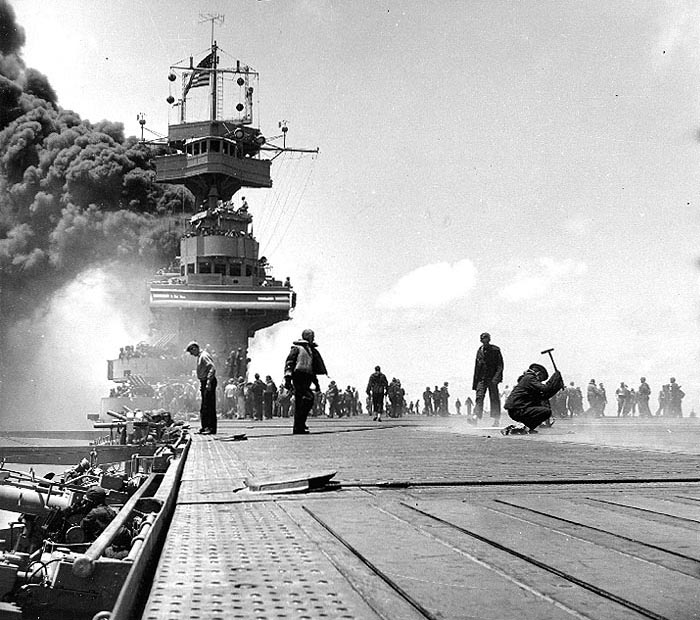The Battle of Midway, 69 Years Later
“The Battle of Midway was probably the most important battle in the Pacific war during World War II”
/https://tf-cmsv2-smithsonianmag-media.s3.amazonaws.com/filer/2011071407400888-159-ka.jpg)
“The Battle of Midway was probably the most important battle in the Pacific war during World War II,” says Russell Lee, a curator in the aeronautics division at the National Air and Space Museum. “On that day, American carrier forces defeated the Japanese, and stopped permanently their westward expansion.” Prior to the battle, Japan possessed naval superiority over the United States; after Midway, the two powers were essentially equal.
Lee recently gave a lecture on the subject as part of the Museum’s Ask an Expert series. “Unbeknownst to the Japanese, late in March 1942, U.S. code breakers had broken the Imperial Navy code, and were able to translate between 10 and 20 percent of that code. So American forces knew that the Japanese were headed for Midway, although they didn’t know exactly when they were going to arrive. That allowed Nimitz to position three aircraft carriers—Yorktown, Enterprise, and Hornet—a couple of hundred miles northwest of Midway.”

The USS Yorktown hit by Japanese bombers, June 4, 1942. Photograph courtesy Naval History & Heritage Command.
Japan sent four aircraft carriers to Midway (two others had been damaged in the Battle of Coral Sea). “A great deal of luck was involved in the American victory,” Lee continued. “Forces were still getting trained, and becoming familiar with the equipment they were using. Throughout the whole morning, they launched one strike after another, using various types of airplanes. This included Air Force B-17s—they made no hits. Also launched from Midway were Army Air Force B-26 Marauders. Three were shot down, one managed to limp back—no hits. Torpedo bombers took off from Midway. They, too, scored no hits. What all these air attacks did, however, was bring the Japanese carrier combat air patrol—airplanes assigned to defend the carriers—down to low level, and into one end of the battle area. So when the American carrier-based dive-bombers showed up, they could dive down unopposed and the Japanese were completely surprised.”
The SBD Dauntless changed the course of the battle. “In the space of five minutes, with these Dauntlesses diving down on them, three of the Japanese carriers were hit. The fourth managed to escape, but later in the day the Americans sank ,” said Lee. “The Dauntless could go as low as 500 feet, and then the pilot could do a high-G pullout and escape. It was almost like having a cruise missile.”
The Dauntless on display at the Museum was the sixth SBD-6 model produced. The Museum’s database notes that the aircraft spent its career at Naval Air Station Patuxent River, in Maryland. From August to September 1944 it was used in tactical tests, and in flight tests from October 1944 to April 1948. It was then put into storage and earmarked for the Smithsonian. It may be the last SBD to serve with the U.S. Navy.
